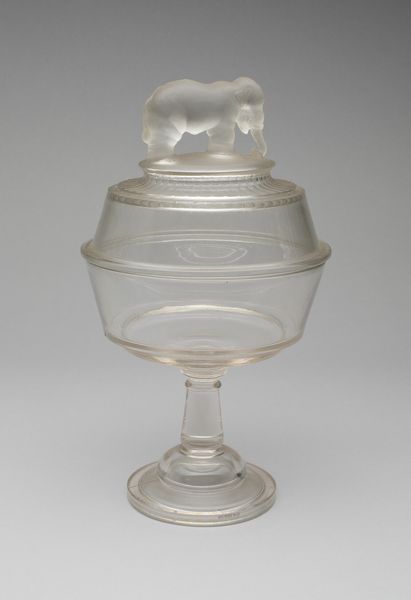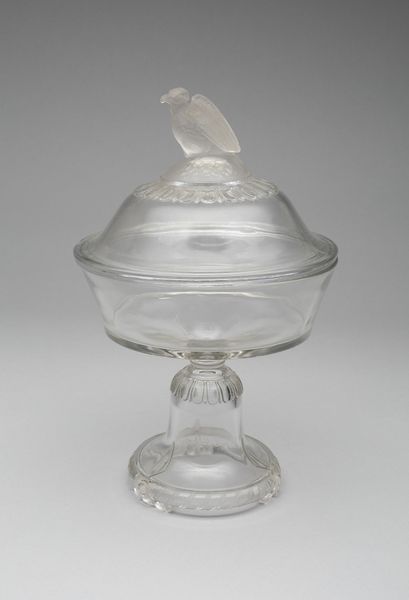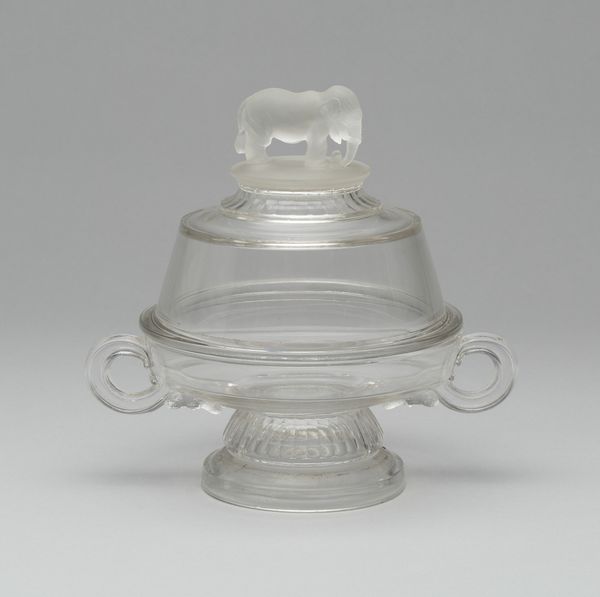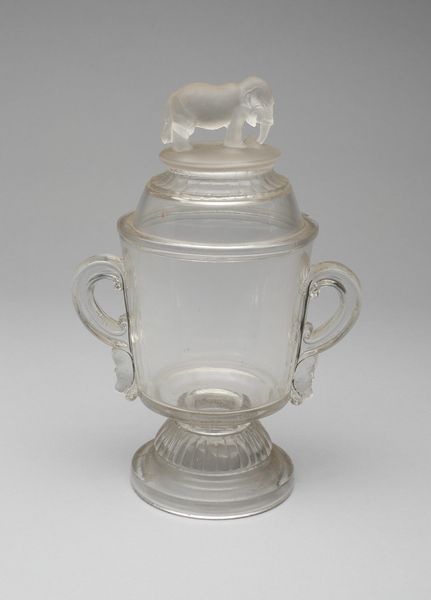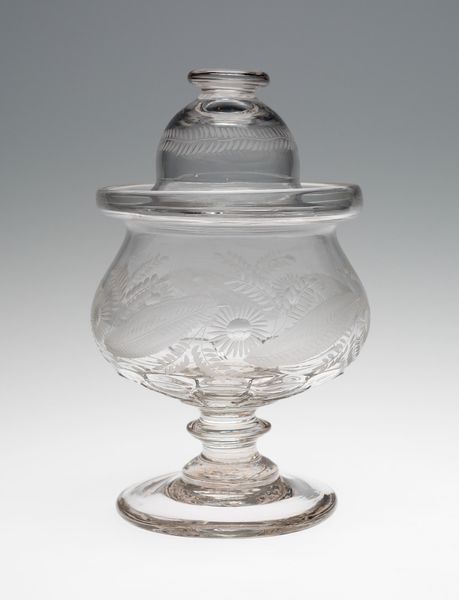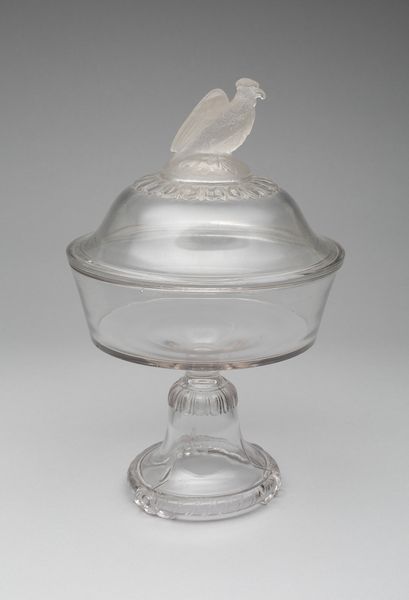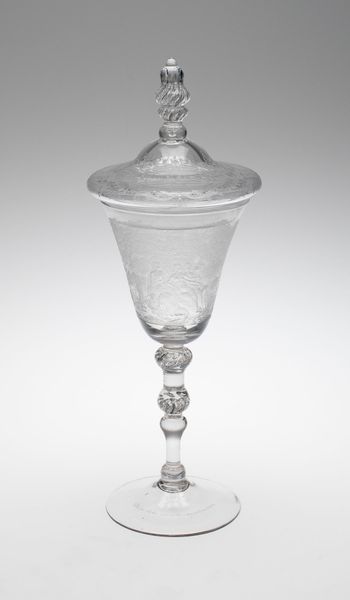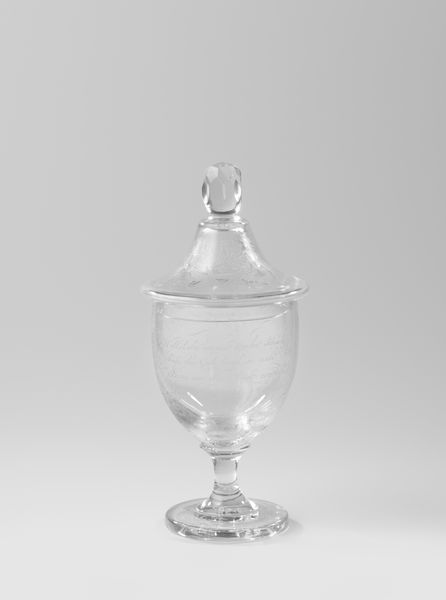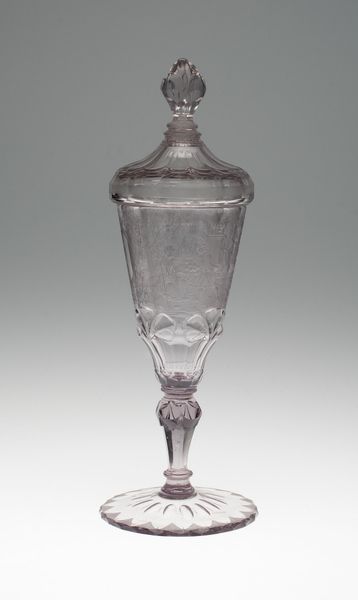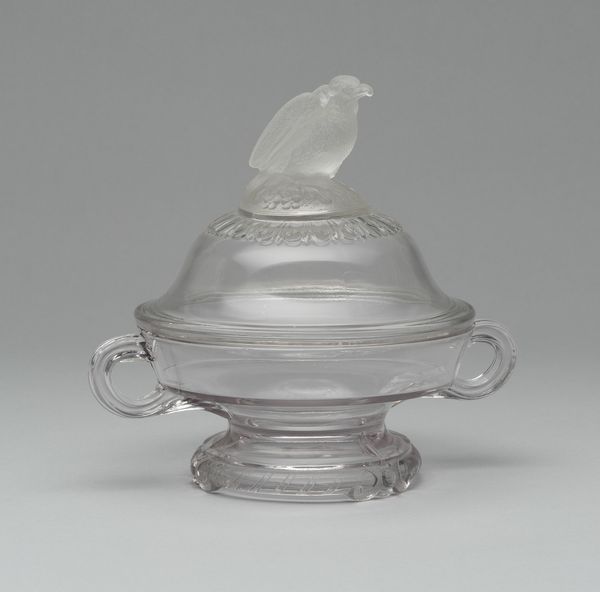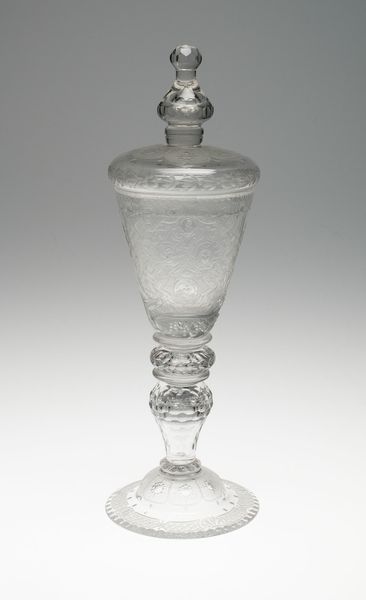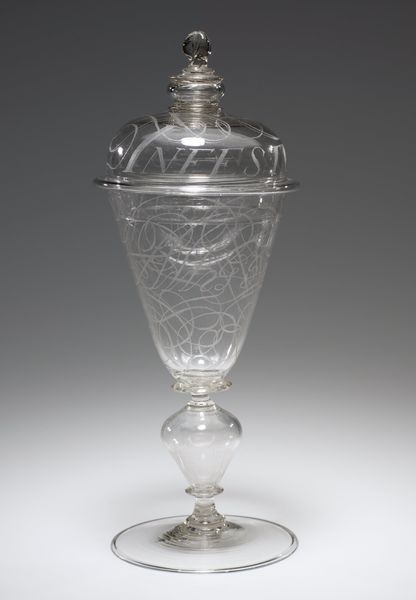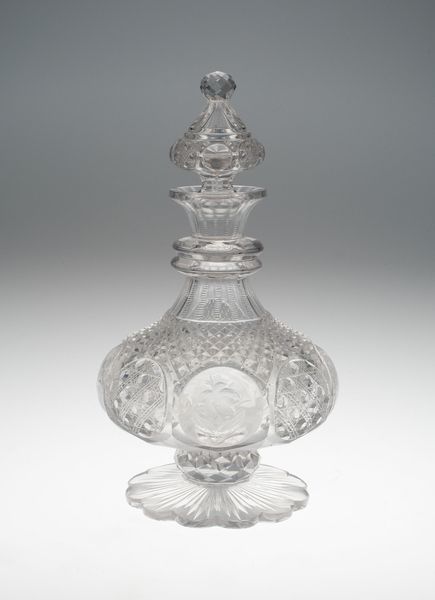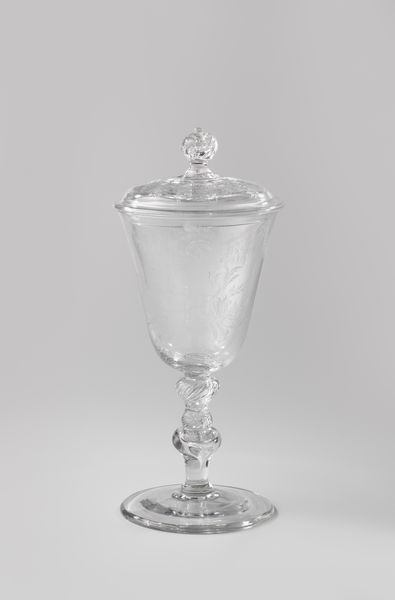
"Jumbo"/Elephant pattern covered compote on pedestal 1883 - 1885
0:00
0:00
glass, sculpture
#
glass
#
sculpture
#
decorative-art
Dimensions: 33 × 20.3 cm (13 × 8 in.)
Copyright: Public Domain
Curator: At first glance, the ethereal transparency gives the piece a certain quiet, restrained power. Editor: Agreed. We’re looking at an elegant covered compote crafted by the Canton Glass Company sometime between 1883 and 1885. It’s titled “Jumbo”/Elephant pattern covered compote on pedestal, and you can find it at the Art Institute of Chicago. Curator: The form is classically elegant—the tiered foot, the waisted stem, the gentle curve of the bowl all speak to a controlled neoclassical vocabulary. But the elephant figure surmounting the lid destabilizes it, introducing a note of whimsy and potential irony. Editor: The elephant's presence invites us to consider material contexts. This piece exemplifies mass production mimicking higher end craftsmanship. It questions authenticity by celebrating skillful glass molding. How did the makers grapple with this tension, making practical items into sculptural adornments? Curator: It is the juxtaposition of functionality with the decorative that captivates me, the translucent glass amplifying this dance of intent. Its transparency unveils emptiness and containment. Consider its semiotic nature—the crystal implies cleanliness and delicacy, appropriate for confectionery or fruit. Yet, it's purely aesthetic. Editor: Yes, the aesthetic impact is evident, especially as consumer glassblowing reached new technological capability and production volume. The skilled workers and shop floors making these luxury items available reflect 19th-century social mobility, though obscured in its perfection. What sort of consumption and lifestyle did these works endorse? Curator: The crystal's colorless brilliance permits pure reflection of its environs, almost disappearing. It underscores symbolic status and refinement while ironically concealing less pleasant material conditions giving rise to it. Editor: Indeed. It's tempting to reframe the artwork against our current lens—considering craft as critique against corporate or industrialized manufacturing. And while stunning as an aesthetic creation, one can consider the skilled labor and environmental materials crucial to making it manifest. Curator: Considering form, function, and symbol—this object truly reflects an era poised on the precipice of modernity. Editor: Yes, a captivating relic whose clarity still echoes the stories of making, marketing, and matter.
Comments
No comments
Be the first to comment and join the conversation on the ultimate creative platform.
